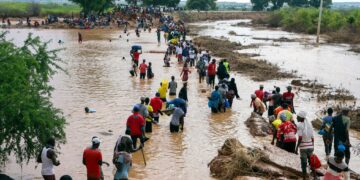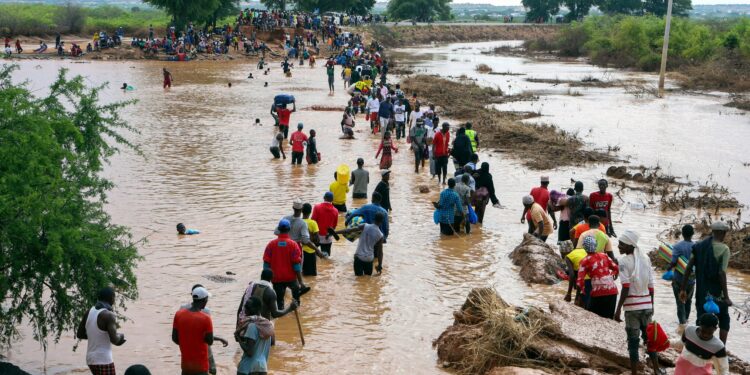By John Ikani
Severe flooding caused by heavy rainfall has ravaged parts of East Africa, causing widespread devastation and loss of life.
The region has witnessed numerous fatalities in recent weeks due to the relentless downpour, which is forecasted to intensify in the coming days.
Burundi, grappling with the aftermath, has appealed for international assistance to cope with the dire situation exacerbated by its economic challenges.
In Nairobi, Kenya, bustling streets have transformed into waterways, with the Kenya Red Cross Society reporting 35 deaths since mid-March.
The overflow of Nairobi River and Athi River has displaced over 40,000 people since March, particularly affecting Nairobi and Machakos County.
While heavy rains during the March-to-May season are not unusual, the current deluge has surpassed previous occurrences, linked by climate experts to the El Nino phenomenon.
Climate experts have linked the ongoing flooding across the region to the El Nino weather phenomenon.
Jean Marie Sabushimike, a geographer and disaster management expert who teaches at the University of Burundi, said: “It must be said directly that these floods are associated with climate changes that affect Burundi like other countries in the region.”
Images from Kenya depict the severity of the crisis, prompting discussions among experts like Jean Marie Sabushimike on the impact of climate change and land-use practices.
In Burundi, where agriculture is a primary livelihood for most of the population, Lake Tanganyika’s rising waters have inundated Bujumbura, the economic hub.
Government appeals for assistance reflect the urgency of the situation, with Minister Martin Niteretse stressing the need for collective efforts to aid affected communities.
In Bujumbura, flooding has submerged major infrastructure like the Boulevard du Japon, while residents recount the unprecedented scale of the disaster.
Somalia and Tanzania are also reeling from flooding, with casualties reported and hundreds displaced, heightening concerns of disease outbreaks.
As meteorological forecasts predict further rainfall in Kenya, authorities brace for potential health hazards, emphasizing the need for immediate response measures.




































